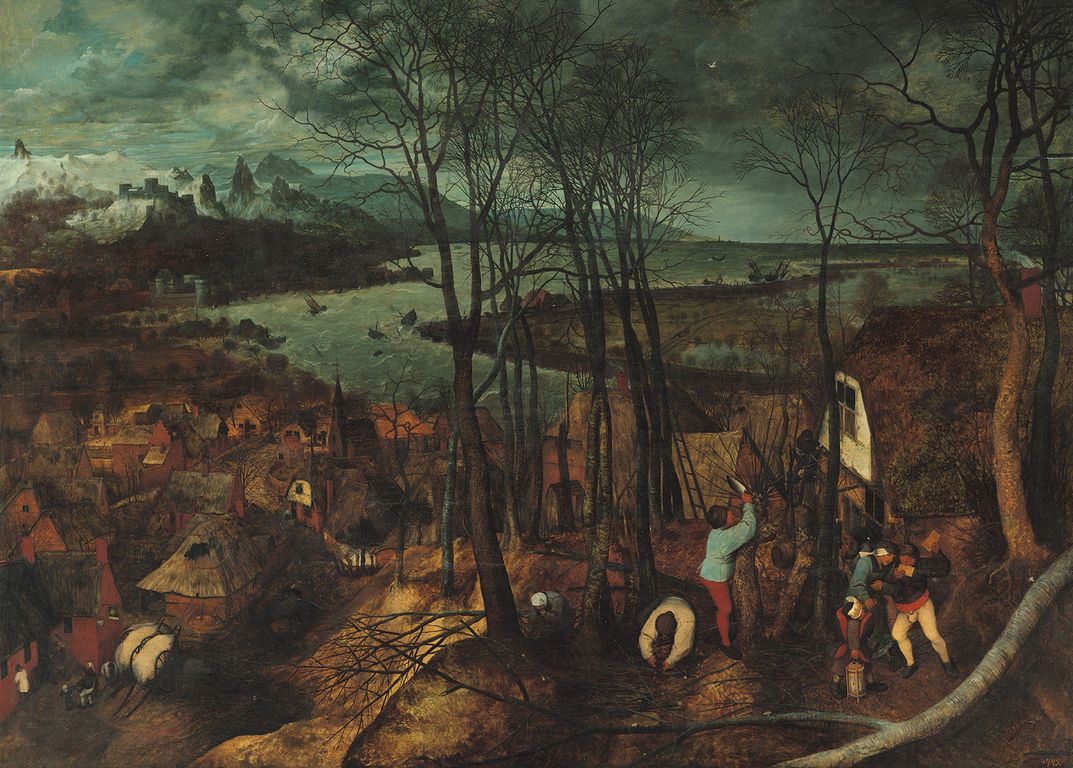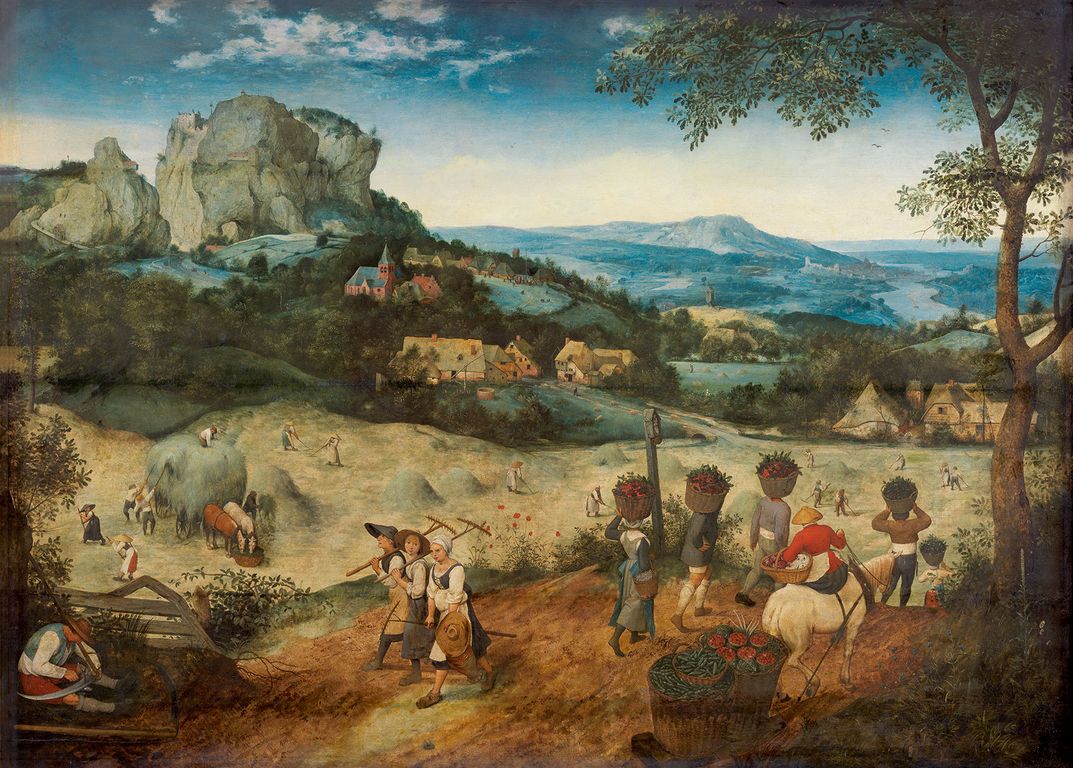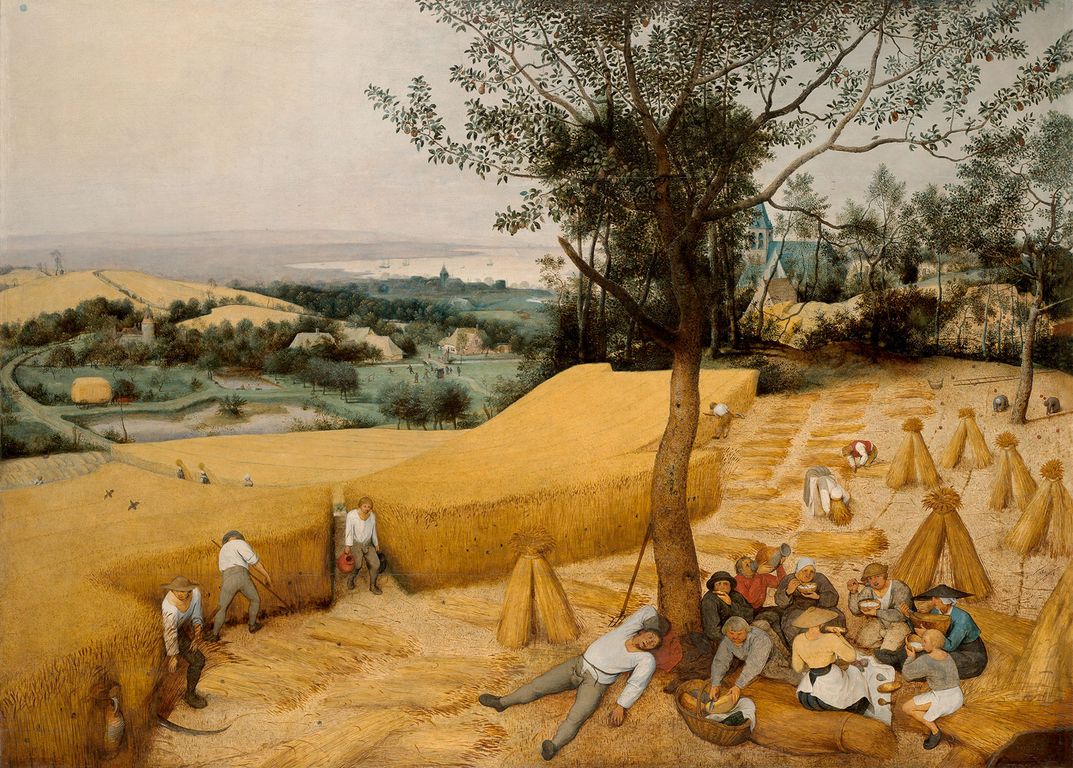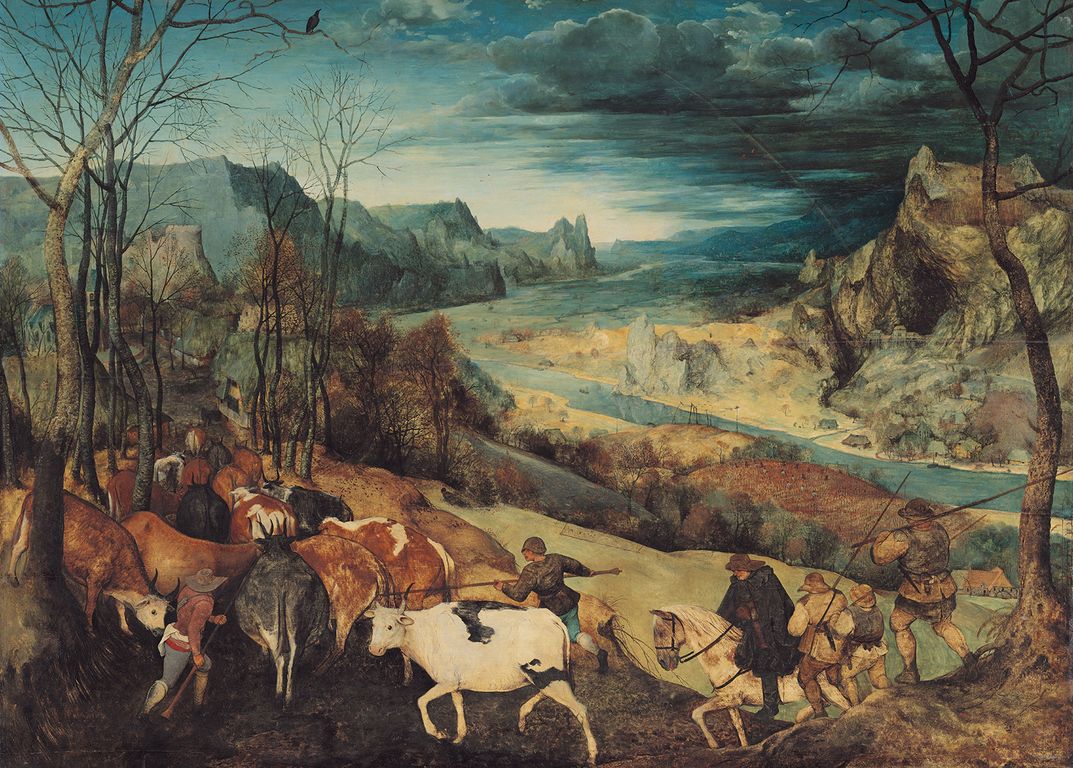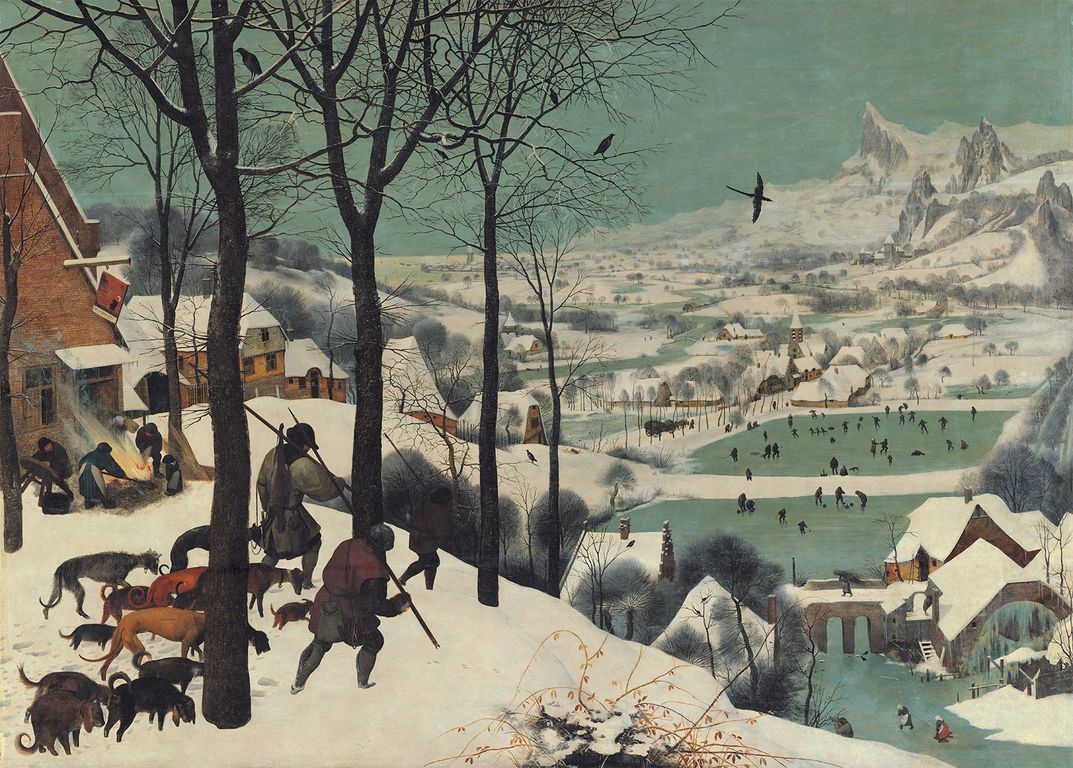Six Seasons for a Dining Room
The Seasons are Bruegel’s most famous work. The series originally comprised six large-scale panel paintings, and Bruegel produced them for the country house of the merchant and collector Nicholaes Jongelinck; called ’t’goed ter Beke’, it was situated in the environs of Antwerp, and the paintings probably once adorned the dining room.
Today, we would visualize the seasons in four paintings; in the sixteenth century in the Low Countries, however, the seasons were divided into six periods: in addition to autumn and winter there were early spring and spring, and early summer and late summer.
Of the six original paintings only five are extant.
Blue
A Text Drama
by Daniel Uchtmann
from the Production Ganymed dreaming by Wennessoweitist (Jacqueline Kornmüller and Peter Wolf)
read by Peter Wolf


Three of these paintings are in the collection of the Kunsthistorisches Museum Vienna: Early Spring, Autumn and Winter. Early Summer is at Lobkowicz Palace in Prague, and Late Summer is now at the Metropolitan Museum in New York.
The Bruegel exhibition is hosting a wonderful reunion as Haymaking (Early Summer), on loan from Lobkowicz Palace in Prague, is displayed together with Early Spring, Autumn and Winter.
A three-dimensional world in landscape
Jongelinck’s guests must have been amazed when they entered his dining room. We believe that the paintings depicting the Seasons were displayed like a frieze on three or four walls of the room.
Thus Bruegel’s cycle of the Seasons functions as a grand three-dimensional world landscape.
From Jongelinck’s dining room, the six paintings departed on a journey that ended in the collection of Archduke Ernest, the younger brother of Emperor Rudolf II. The city of Antwerp had presented the Seasons to him during his tenure as regent of the Spanish Netherlands in the late sixteenth century. This is how they entered the Habsburg collection, where they were joined by a number of other panel paintings by Bruegel.

